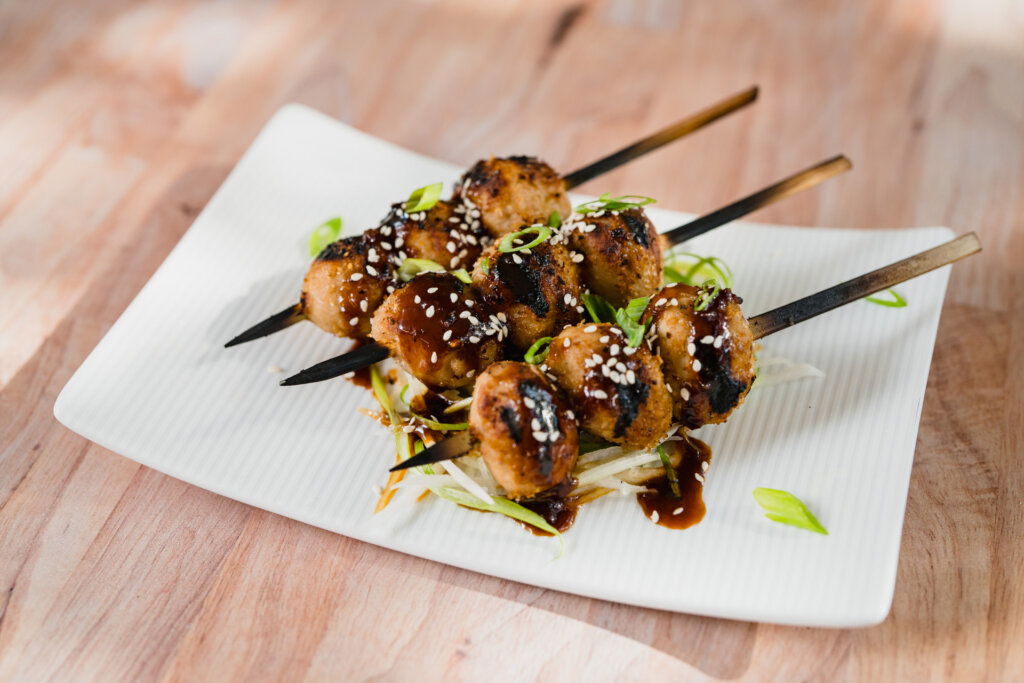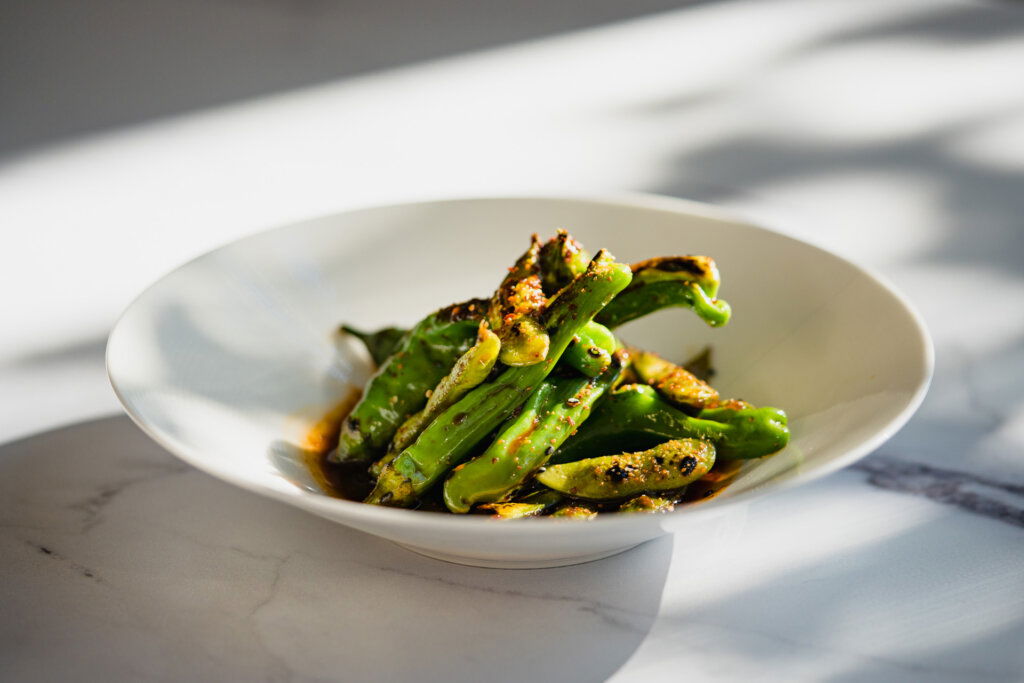

With its focus on balance and simplicity, Japanese cuisine influences food trends around the globe. Not only have traditional Japanese ingredients and flavors been shaped over centuries of history, but they also align with the way consumers want to eat today.
On the protein side, Japanese flavors are commonly used to enhance seafood, with items like cod in miso-yuzu butter sauce and ginger-miso-glazed salmon found on Canadian and American retail shelves. German grocers are stocked with chicken karaage, deep fried with a soy, ginger and spice batter. Even plant-based protein like cedar-smoked tofu can be found in France, prepared using traditional Japanese techniques.
Japanese-inspired snacks can be seen in a variety of formats, ranging from classic on-the-go snacks to larger portioned, more filling items. Bold flavors enliven crunchy favorites, including Vietnamese shoyu and honey-flavored rice crackers, wasabi-soy almonds in Oman and Thai capelin roe mayonnaise chips. More substantial snacks, including seaweed-wrapped smoked salmon rice balls, or onigiri, found in Colombia, Swedish tonkotsu ramen and hoisin duck gyoza in the UK open the doors for flavor exploration.
In foodservice, the influence of Japanese cuisine can be seen from quick service restaurants all the way to Michelin-starred fine dining establishments. One casual dining operator in the US is seeking to make sushi more accessible, serving aburi (torched sushi) in a relaxed environment. In Peru, the Nikkei cooking style applies Japanese techniques to Peruvian ingredients, resulting in such dishes as Paracas scallops with green beans and miso, or lucuma ice cream topped with soy sauce. And a global burger chain is bringing a Japanese favorite to the masses, serving up fried shrimp tempura sandwiches in Taiwan.
As food costs continue to rise, take a cue from the hallmarks of Japanese cuisine: capitalize on smaller, more curated portions and focus on bright, umami-forward flavors and unique textures.
3 Trends to Watch

Meatless Authenticity:
With proteins trending towards plant-based alternatives, brands will look for ways to remain true to cuisines such as Japanese barbecue and sushi while offering meatless versions.

Umami-Rich Snacks:
Snack brands will expand their flavor repertoire beyond soy, wasabi and miso into ingredients such as katsuobushi and kombu. The inclusion of fermented ingredients may allow for the promotion of immunity and gut health claims.

Flavor Fusion:
With Japanese cuisine proliferating around the globe, foodservice operators will create fusion dishes that combine local culture with Japanese flavors.

Modern Takes on Authentic Cuisine
Simple yet elegant composition is one of the hallmarks of Japanese cuisine. Watch Chef Jaime Mestan create Skewered Chicken Tsukune, richly seasoned chicken meatballs brushed with a mouthwatering yakitori glaze featuring soy, mirin, sake and sugar.
Segment Snapshot
QSR/Foodservice:
By experimenting with plant-based Japanese meat alternatives, small plates and traditional cooking techniques, operators are exciting patrons and creating fusion dishes with authentic Japanese inspiration.
Protein Processors:
Meat, fish and plant-based protein products are leveraging the regional flavors of Japan, including the citrusy tang of yuzu and savory umami-rich ingredients like miso. Miso, in particular, is becoming more widely utilized.
Snacking:
CPG snack brands are leveraging more mainstream Japanese flavors, including soy, teriyaki and wasabi. On the sweeter side, flavors such as ume (a plum-like fruit) can be found in applications like cakes and beverages.

Culinary Inspiration
Get inspired by these on-trend concepts to create innovative offerings using products from Griffith Foods.
Skewered Chicken Tsukune with Yakitori Glaze

Seasoned chicken meatballs seasoned are grilled on skewers and brushed with a classic yakitori glaze made with soy, mirin, sake and sugar. Topped with sesame seeds and slivered green onion.
Featuring: Griffith Foods Tsukune Meatball Seasoning and Binder, Griffith Foods Yakitori Glaze
Char-Roasted Edamame Beans and Togarashi-Dusted Shishito Peppers with Soy-Yuzu Drizzle

A duo of edamame pods and shishito peppers are char-roasted and dusted with spicy and savory togarashi seasoning, served with a soy-yuzu sauce for dipping.
Featuring: Griffith Foods Soy-Yuzu Dipping Sauce, Griffith Food Togarashi Seasoning
Chef Tip

“Miso paste is an indispensable staple in any commercial kitchen. Combined with honey and a drop of toasted sesame oil, it makes an excellent glaze for grilled meats and vegetables. Or, add a touch of rice vinegar for an easy low-fat salad dressing.”
–Chef Mark Serice, Vice President Global Culinary, Griffith Foods
Focus on Sustainability

In recent years, as Japanese cuisine has grown in popularity, so has the consumption of tuna—making sustainable seafood more important than ever. Companies are taking on the challenge of fully farming tuna while chefs focus on fish certified by such non-profit organizations as the Marine Stewardship Council and Aquaculture Stewardship Council. Restaurants are also incorporating different types of fish of the menu (along with a wider array of cuts/parts) to reduce food waste.
–Kano Shunsuke, Corporate Chef, Griffith Foods Japan

© 2022 Griffith Foods. All rights reserved.
Source: Mintel, 2022 FlavorIQ® Global Trends and Insights Report, January 2022.




